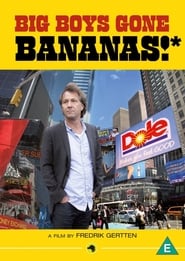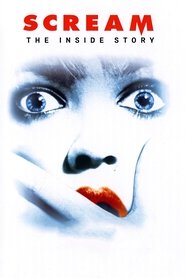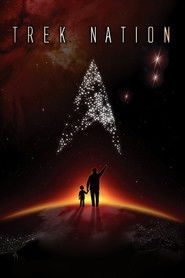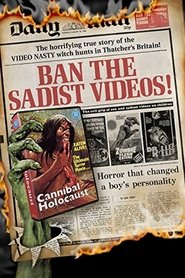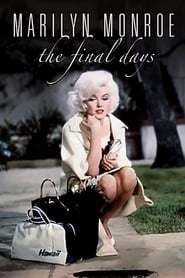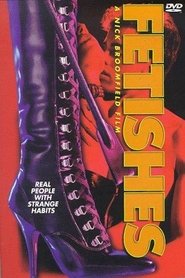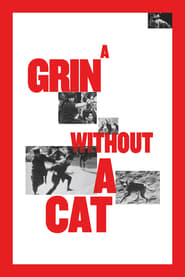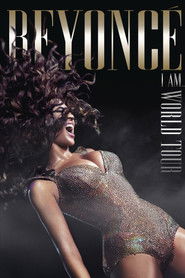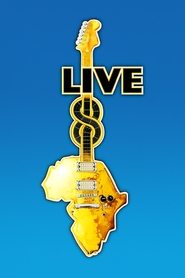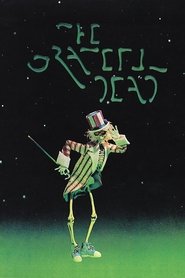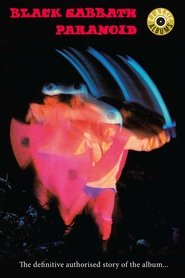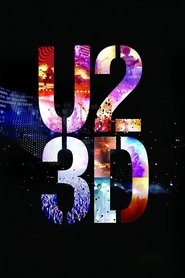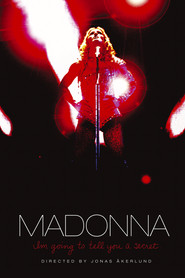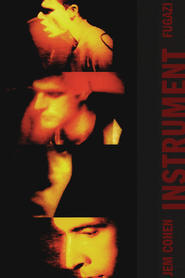Top Rated Documentary Movies on Pantaflix - Page 151
-
Big Boys Gone Bananas!*
2011
star 6.8The conflict between Dole Food Company and Swedish filmmaker Fredrik Gertten unfolds dramatically in the documentary "BIG BOYS GONE BANANAS!" as the corporation attempts to suppress Gertten's earlier film, "BANANAS!"—chronicling Nicaraguan workers' lawsuit against Dole. Initially selected for the 2009 Los Angeles Film Festival, "BANANAS!" was abruptly removed from competition, followed by a negative article in the Los Angeles Business Journal and legal threats from Dole's attorneys. Gertten captures this saga of corporate intimidation, media manipulation, and legal challenges in his documentary, showcasing the struggles documentary filmmakers face and highlighting the threat to freedom of speech posed by powerful corporations protecting their reputations. -
Scream: The Inside Story
2011
star 6.1In 1996, the horror master Wes Craven unleashed Scream, a slasher movie aimed at a whole new generation of teenage movie-goers. -
Trek Nation
2011
Trek Nation
2011
star 7.1Trek Nation is a documentary film directed by Scott Colthorp examining the positive impact that Star Trek and creator Gene Roddenberry may have had on people's lives as seen through the eyes of his son, Eugene Roddenberry, Jr. ("Rod"). It includes interviews with castmembers and crew from all five Star Trek shows, as well as various fans and celebrities who were markedly influenced by the show while growing up. Rod Roddenberry also visits Skywalker Ranch to interview George Lucas on the influence that Star Trek had on him. Lucas shares how he had gone to Star Trek conventions prior to creating Star Wars. -
Black Tar Heroin: The Dark End of the Street
2000
star 6.9The film follows a simple structure, and shows the drug-related degradation of five youths (Jake, Tracey, Jessica, Alice, Oreo) during the course of three years. The film depicts drug-related crimes and diseases: prostitution, male prostitution, AIDS, and lethal overdoses. -
Ban the Sadist Videos!
2005
star 6.9An in-depth analysis of the "Video Nasty" scandal of the early 1980s in Britain. -
Wilde Salomé
2013
Wilde Salomé
2013
star 6.2Pacino takes us on a journey as he unravels and re-interprets Oscar Wilde's once banned and most controversial work SALOME, a scintillating tale of lust, greed and one woman's scorn. -
Marilyn Monroe: The Final Days
2001
star 7Marilyn Monroe's final project, "Something's Got to Give", has become one of the most talked about unfinished films in history. The story of the film and Marilyn's last days were seemingly lost… until now. Through interviews, never-before-seen footage and an edited reconstruction of "Something's Got to Give", Marilyn Monroe: The Final Days provides a definitive and fascinating look at the last act in the life of the world's most famous and tragic superstar. -
Fetishes
1996
Fetishes
1996
star 5.7Nick Broomfield and a documentary crew visit Pandora's Box, an up-scale house of bondage on Manhattan's Fifth Avenue, where clients pay $175 an hour to be subservient to mistresses. Mistresses talk about their craft; a few clients, usually masked, are interviewed as well. Then, the camera watches sessions organized around fetishes: rubber, wrestling, corporal punishment, masochism, and infantilism. Mistress Raven, the owner of Pandora's Box, explains that pain need not be part of the subservient experience: it is, at its root, a transfer of power. After their session has ended, clients talk about how drained, relaxed, relieved, and at peace they are. -
Dinosaurs: Giants of Patagonia
2007
star 6.7If it weren't for a series of cataclysmic events, a comet impact being first on the list, our planet could well still be the domain of dinosaurs. Following Pr Rodolfo Coria, a world-renowned Argentinian paleontologist, we visit sites of major discoveries he has contributed to in Patagonia and travel back in time to see these amazing beasts come to life in 3D... -
A Grin Without a Cat
1977
A Grin Without a Cat
1977
star 7.7French essay film focusing on global political turmoil in the 1960s and '70s, particularly the rise of the New Left in France and the development of socialist movements in Latin America. -
Beyoncé: I Am... World Tour
2010
star 8.2108 shows, 78 cities, 32 countries, 6 continents, 1.1 million fans. Beyoncé’s I Am... World Tour captures concert footage from numerous shows edited into one extraordinary concert. Weaved into this concert are highlights that give a rare glimpse into the dynamic and personal world of this multi-faceted icon. As a bonus is a behind-the-scenes documentary entitled Mic and a Light. I Am... World Tour Blu-ray captures not only an unforgettable performance from the superstar singer and entertainer, but showcases her astonishing talent as a filmmaker, director and producer. -
Annie Leibovitz: Life Through a Lens
2007
star 7.7An account of the professional and personal life of renowned American photographer Annie Leibovitz, from her early artistic endeavors to her international success as a photojournalist, war reporter, and pop culture chronicler. -
Richard Pryor: Live and Smokin'
1971
star 6.4Richard Pryor: Live & Smokin' is the first stand-up act of Richard Pryor to be filmed out of the four that were released in total. This film was filmed in 1971 but not released until 1985, on VHS. This was the first stand-up act that Pryor did before he hit the mainstream audience. With only 48 minutes of footage, it is the shortest of Pryor's stand-up routines. -
Live 8
2005
Live 8
2005
star 7.2On 2 July 2005 an estimated 3 billion people came together in the fight against extreme poverty. LIVE 8 - 10 concerts featuring over 1000 musicians from across the globe - asked people not for their money, but for their voice. -
The Grateful Dead
1977
The Grateful Dead
1977
star 7.5The Grateful Dead performs live at Winterland in San Francisco in October 1974. -
Classic Albums: Black Sabbath - Paranoid
2010
star 7The story of how the classic album "Paranoid" was made, with stories from band members to those who were influenced by its content, form and vitality. Paranoid is the second studio album by English rock band Black Sabbath. Released in September 1970, it was the band's only LP to top the UK Albums Chart until the release of 13 in 2013. Paranoid contains several of the band's signature songs, including "Iron Man", "War Pigs" and the title track, which was the band's only Top 20 hit, reaching number 4 in the UK charts. It is often regarded as one of the most quintessential and influential albums in heavy metal history. -
U2 3D
2008
U2 3D
2008
star 7.4A 3-D presentation of U2's global "Vertigo" tour. Shot at seven different shows, this production employs the greatest number of 3-D cameras ever used for a single project. -
I'm Going to Tell You a Secret
2005
star 6.7A documentary that follows Madonna on her 2004 Re-Invention World Tour. -
Cocksucker Blues
1972
Cocksucker Blues
1972
star 6This fly-on-the-wall documentary follows the Rolling Stones on their 1972 North American Tour, their first return to the States since the tragedy at Altamont. -
Instrument
1999
Instrument
1999
star 6.8The band Fugazi is documented over a period of more than ten years (1987-1998) through performance footage and interviews with the band and their fans. Director Jem Cohen's relationship with band member Ian MacKaye extends back to the 1970s when the two met in high school in Washington, D.C.. The film takes its title from the Fugazi song of the same name, from their 1993 album, In on the Kill Taker. Editing of the film was done by both Cohen and the members of the band over the course of five years. It was shot from 1987 through 1998 on super 8, 16mm and video and is composed mainly of footage of concerts, interviews with the band members, practices, tours and time spent in the studio recording their 1995 album, Red Medicine. The film also includes portraits of fans as well as interviews with them at various Fugazi shows around the United States throughout the years.
 Netflix
Netflix
 Amazon Prime Video
Amazon Prime Video
 Apple iTunes
Apple iTunes
 Apple TV Plus
Apple TV Plus
 Disney Plus
Disney Plus
 Google Play Movies
Google Play Movies
 Paramount Plus
Paramount Plus
 Hulu
Hulu
 HBO Max
HBO Max
 YouTube
YouTube
 fuboTV
fuboTV
 Peacock
Peacock
 Peacock Premium
Peacock Premium
 Amazon Video
Amazon Video
 The Roku Channel
The Roku Channel
 AMC+
AMC+
 Kocowa
Kocowa
 Hoopla
Hoopla
 The CW
The CW
 Vudu
Vudu
 Starz
Starz
 Showtime
Showtime
 PBS
PBS
 Pantaflix
Pantaflix
 FXNow
FXNow
 Tubi TV
Tubi TV
 Kanopy
Kanopy
 Comedy Central
Comedy Central
 Crunchyroll
Crunchyroll
 Microsoft Store
Microsoft Store
 Redbox
Redbox
 Sun Nxt
Sun Nxt
 ABC
ABC
 DIRECTV
DIRECTV
 Crackle
Crackle
 Fandor
Fandor
 Plex
Plex
